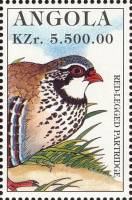Pesticide coated seeds are commonly used in agriculture, and may be an important source of food for some birds in times of scarcity, as well as a route of pesticide ingestion. We tested the lethal and sub-lethal effects of treated seed ingestion by the red-legged partridge (Alectoris rufa), a game bird of high socio-economic value
in Spain. One year-old partridges (n = 42 pairs) were fed for 10 days in spring (prior to breeding) with wheat treated with difenoconazole (fungicide), thiram (fungicide) or imidacloprid (insecticide), using two doses for each pesticide (the one recommended, and its double to represent potential cases of abuse of pesticides). We investigated the direct and indirect effects on the body condition, physiology, immunology, coloration and subsequent reproduction of exposed partridges. For the latter, eggs were collected, measured and incubated and the growth and survival of chicks were monitored. Thiram and imidacloprid at high exposure doses produced mortalities of 41.6 and 58.3 %, respectively. The first death was observed at day 3 for imidacloprid and at day 7 for thiram. Both doses of the three pesticides caused sublethal effects, such as altered biochemical parameters, oxidative stress and reduced carotenoid-based coloration. The high exposure doses of
imidacloprid and thiram also produced a decrease in cellular immune response measured by the phytohemagglutinin test in males. Bearing in mind the limitation of the small number of surviving pairs in some treatments, we found that the three pesticides reduced the size of eggs and imidacloprid and difenoconazole also reduced the fertilization rate. In addition, both thiram and imidacloprid reduced chick survival. These experiments highlight that the toxicity of pesticide-treated seeds is a factor to consider in the decline of birds in agricultural environments.
Source: Ana Lopez-Antia et al. Ecotoxicology (2013) 22:125–138 (attached)

- Log in to post comments
